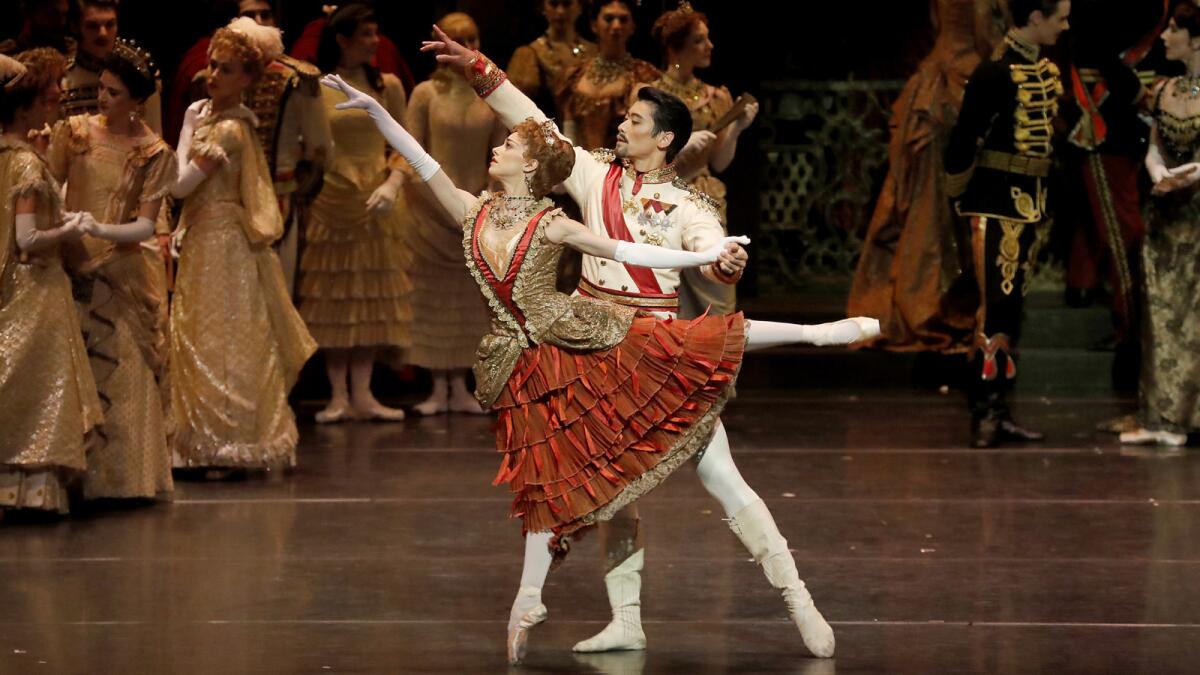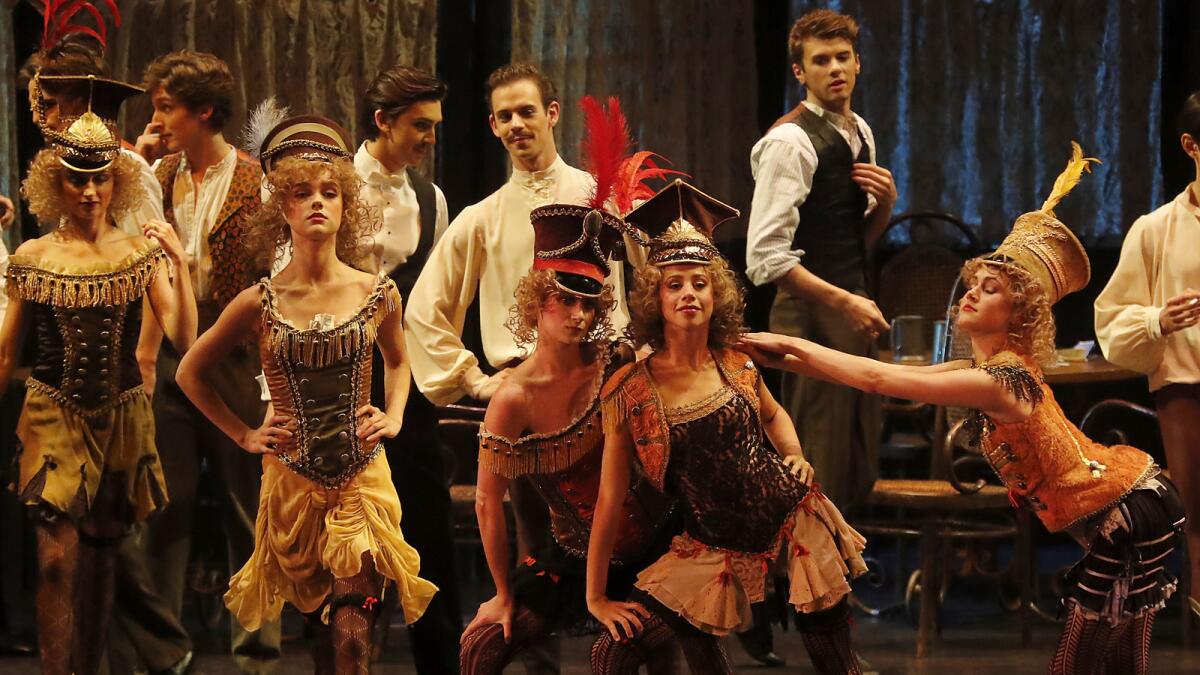Review: Royal Ballet comes to L.A. for the first time in years with ‘Mayerling’

- Share via
Considering all the contenders, is it heresy to name England’s Royal Ballet the finest classical company now dancing? Probably not, for the performance Friday at the Dorothy Chandler Pavilion made that conclusion utterly reasonable.
After all, the Russians have never been interested in the kind of expressive nuances that make British style so brilliantly eloquent, while the flagship American companies have recently turned their backs on their creative heritage, ending expressively betwixt and between. Yes, there’s Paris, but who has seen them in the quarter-century that kept the Royals off local stages until Friday?
Consider casting-in-depth, one of the first lessons of the company’s prime two-weekend engagement here. Kenneth MacMillan’s three-act 1978 dance-drama “Mayerling” contains no less than five major female roles — assignments calling for powerful acting as well as stellar technique. What other company could field such a roster over multiple performances with this distinction?
The second lesson — grimly evident in three hours of relentlessly over-the-top choreography to a deadly patchwork of music by Liszt — is that the company’s flame burns bright even in unworthy repertory. In “Mayerling,” MacMillan’s dance language is a hodgepodge of pantomime clichés, Soviet-style gymnastics and aggressive classicism. Based on a murder-suicide in the late 1880s that shook the Austro-Hungarian Empire, “Mayerling” focuses on the obsessions of Crown Prince Rudolf.
Unfortunately for the Brits, such dance-makers as Boris Eifman and Matthew Bourne have made obsession far more compelling, and on Friday, Ryoichi Hirano as Rudolf didn’t so much unify the components of the role as ricochet between them. One moment he looked plausibly drunk; in the next, he tossed off complex step-combinations with perfect textbook placement. He could dance beautifully, but not in character.

As Mary, his doomed mistress, Natalia Osipova displayed her state-of-the art speed, lightness and high extensions without ever getting into the soul of the woman or making her duet with Hirano the heart-stopping showpiece it needed to be. Yes, watching this great ballerina being recklessly flung about in her final scene had its effect. But by that time we had seen too much of Rudolf-the-abuser, and too much of “Mayerling” too.
Performances by dancers playing two of Rudolf’s mistreated women generated greater force fields of interest. As Countess Larisch, the complex collaborator in Rudolf’s downfall, Sarah Lamb made her character’s story arc far more sympathetic than Rudolf’s. And in a most moving performance, Francesca Hayward as Princess Stephanie endured not only social snubs but also rape.
Among their exemplary colleagues, Kristen McNally (the Empress), Marianela Nuñez (Mitzi Caspar), Alexander Campbell (Bratfisch) and Gary Avis (“Bay” Middleton) deserved their prominence.
Lighting by John B. Read helped enforce the twilight-of-empire aesthetic, and designer Nicholas Georgiadis created an artful sense of Austro-Hungarian decay. But between each shift from one imposing full-stage vista to the next, useless mime-diversions invariably took place on the curtained-off forestage — Rudolf’s chums hiding in the drapes, for example. As a result. “Mayerling” looked backdated in its stagecraft no less than in its movement vocabulary.
Koen Kessels forcefully conducted a locally recruited orchestra in the dismal Liszt collage as arranged and orchestrated by John Lanchbery.
There’s no denying that in his time, MacMillan provided high-profile vehicles for what now seems a golden age of Royal Ballet dancers. Staged by Christopher Saunders, this revival can’t make a case for him as an innovator at the level of his countrymen Frederick Ashton and Antony Tudor. However, the dancing Friday reminded Angelenos of what high satisfaction a stylistically unified world-class ensemble can provide, no matter what it chooses to perform.
On July 12 and 13, the company chooses to perform a program of brand-new creations, in collaboration with Company Wayne McGregor. That should be a lesson too.
MORE DANCE: This choreographer uses dance to help transgender communities feel seen »
Support our coverage of dance by becoming a digital subscriber and reading our latest news and reviews at latimes.com/arts.
More to Read
The biggest entertainment stories
Get our big stories about Hollywood, film, television, music, arts, culture and more right in your inbox as soon as they publish.
You may occasionally receive promotional content from the Los Angeles Times.










